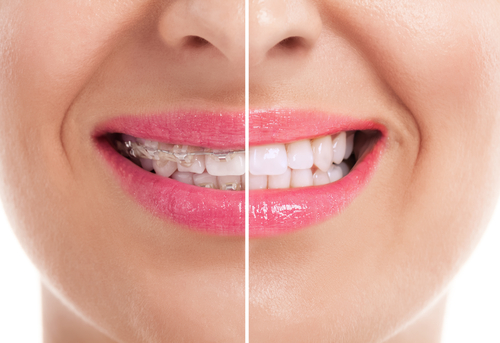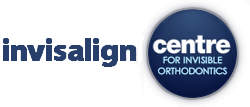Protecting Your Smile from Orthodontic Relapse
Orthodontic relapse occurs when teeth revert to their original position. This relapse erases the results achieved by our Brickell, FL, orthodontist, and puts your teeth at risk of decay, gum disease, and accelerated wear.
Dr. Stephen Grussmark knows orthodontic treatments are a financial and time investment. If you’d like to see your straightened smile last well into the future, look out for critical contributors to braces relapse, and don’t forget to call 786-563-4973 to schedule an appointment.

What Is Orthodontic Relapse?
Orthodontic relapse occurs when teeth previously straightened through orthodontic treatment, gradually shift back toward their original, misaligned positions. This can lead to a deterioration in the appearance of your smile and pose potential risks to your oral health.
What is Orthodontic Relapse?
Orthodontic relapse is a condition where teeth previously straightened through orthodontic treatment, such as braces or Invisalign, gradually shift back toward their original positions. This can happen to anyone who has undergone orthodontic treatment, so it’s important to be aware of the signs and symptoms and address them promptly.

Causes of Orthodontic Relapse
Several factors can contribute to orthodontic relapse in Brickell, FL. Here are some of the most common:
- Inconsistent Retainer Wear: Retainers are crucial for maintaining your new smile after orthodontic treatment. If you don’t wear your retainers as instructed by your South Florida orthodontist, your teeth are more likely to move back out of place.
- Age-related Changes: As we age, our teeth naturally continue to erupt and shift. This can put pressure on the teeth and contribute to relapse.
- Lost Teeth: If you lose a tooth after orthodontic treatment, the surrounding teeth may drift into the space, causing misalignment.
- Teeth Grinding (Bruxism): Bruxism can wear down tooth enamel and put excessive pressure on the teeth, increasing the risk of relapse.
- Wisdom Teeth Eruption: If your wisdom teeth erupt and there isn’t enough space in your jaw, they can push other teeth out of alignment.
Signs and Symptoms of Orthodontic Relapse
If you’re concerned about orthodontic relapse in Brickell, FL, be aware of these common signs and symptoms:
- Noticeable shifting of your teeth from their corrected positions.
- A return of crowded or misaligned teeth.
- Gaps forming between teeth that were previously aligned.
- Changes in your bite, how your upper and lower teeth come together.
- An increase in oral discomfort or jaw pain.
If you notice any of these signs, schedule an appointment with a South Florida orthodontist, such as Dr. Stephen Grussmark, to discuss treatment options. Early intervention can help prevent further relapse and maintain your beautiful smile.
Treating Orthodontic Relapse
The good news is that orthodontic relapse in Brickell, FL is often treatable! The specific approach will depend on the severity of the relapse. At Dr. Stephen Grussmark’s orthodontic practice, we offer various treatment options to address relapse and get your smile back on track.
- Retainer Use: In mild cases, consistent wear of your existing retainers, as instructed by your South Florida orthodontist, might be sufficient to correct minor relapse.
- Retreatment with Braces or Aligners: For more significant relapse, retreatment with braces or clear aligners like Invisalign may be necessary. The duration of retreatment is usually shorter compared to the initial treatment.
- Minor Tooth Adjustments: In some cases, minor adjustments like dental bonding or reshaping individual teeth might be enough to address the relapse.
Benefits of Retreatment after Orthodontic Relapse
To prevent relapse, it’s essential to follow these guidelines from Dr. Grussmark:
- Wear Retainers: Retainers are custom-made devices that help maintain your teeth’s new positions after braces or Invisalign treatment. Consistently wearing your retainers, as instructed by your orthodontist, is crucial to prevent relapse.
- Follow Post-Treatment Instructions: Your orthodontist will provide specific post-treatment care instructions, such as dietary restrictions and oral hygiene practices. Following these recommendations can help maintain your results.
- Regular Check-ups: Continue to visit your orthodontist for check-ups and adjustments. They can monitor your progress and make necessary corrections if any relapse is detected early.
- Maintain Good Oral Hygiene: Proper dental care, including brushing, flossing, and regular cleanings, is essential to preserve the results of orthodontic treatment.
- Avoid Bad Teeth Habits: Refrain from habits like nail-biting, pencil-chewing, or tongue-thrusting, which can exert pressure on teeth and contribute to relapse.
Preventing Orthodontic Relapse
If you’re experiencing orthodontic relapse, considering retreatment offers several benefits:
- Restored Smile Aesthetics: Retreatment can help you achieve the straight, beautiful smile you desired from the initial treatment.
- Improved Oral Health: Properly aligned teeth are easier to clean and maintain, reducing the risk of cavities and gum disease.
- Enhanced Confidence: A confident smile can positively impact your personal and professional life.
- Long-lasting Results: By addressing relapse promptly and following your orthodontist’s instructions, you can increase the chances of maintaining your straightened smile for years to come.
Frequently Asked Questions
Which teeth are most likely to relapse?
Teeth that were initially more crowded or misaligned are most likely to relapse. This is especially true for the front teeth, both upper and lower. These teeth are more visible and may have less bone support than other teeth.
How long does it take to correct orthodontic relapse?
The time it takes to correct orthodontic relapse depends on the severity of the relapse. In some mild cases, wearing retainers consistently for a designated period might be enough. More significant relapse may require wearing braces or aligners again, but typically for a shorter duration compared to the initial treatment. The exact timeframe will be determined by your orthodontist after examining your situation.
Does insurance cover orthodontic treatment a second time?
Dental insurance coverage for orthodontic treatment varies depending on the specific plan and provider. Some insurance plans may offer partial coverage for relapse treatment, especially within a certain timeframe of the initial treatment. However, it’s not guaranteed. It’s always best to contact your insurance provider directly to understand your coverage details related to orthodontic relapse treatment.
Does orthodontic relapse hurt?
Relapse itself typically doesn’t cause pain. However, the process of correcting the relapse, whether through retainer adjustments or wearing braces/aligners again, might cause some temporary discomfort or soreness similar to what you experienced during the initial treatment. This discomfort is usually mild and manageable.
Visit our Florida Orthodontist to Prevent Orthodontic Relapse After Invisalign
At our Brickell, FL, orthodontics office, we’re dedicated to ensuring you enjoy your beautifully aligned smile for years. If you notice any signs of previously treated teeth shifting out of position, contact our practice at (786) 563-4973 and schedule an appointment with Dr. Grussmark. We welcome patients from Miami, Miami Beach, and Coral Gables, FL.

